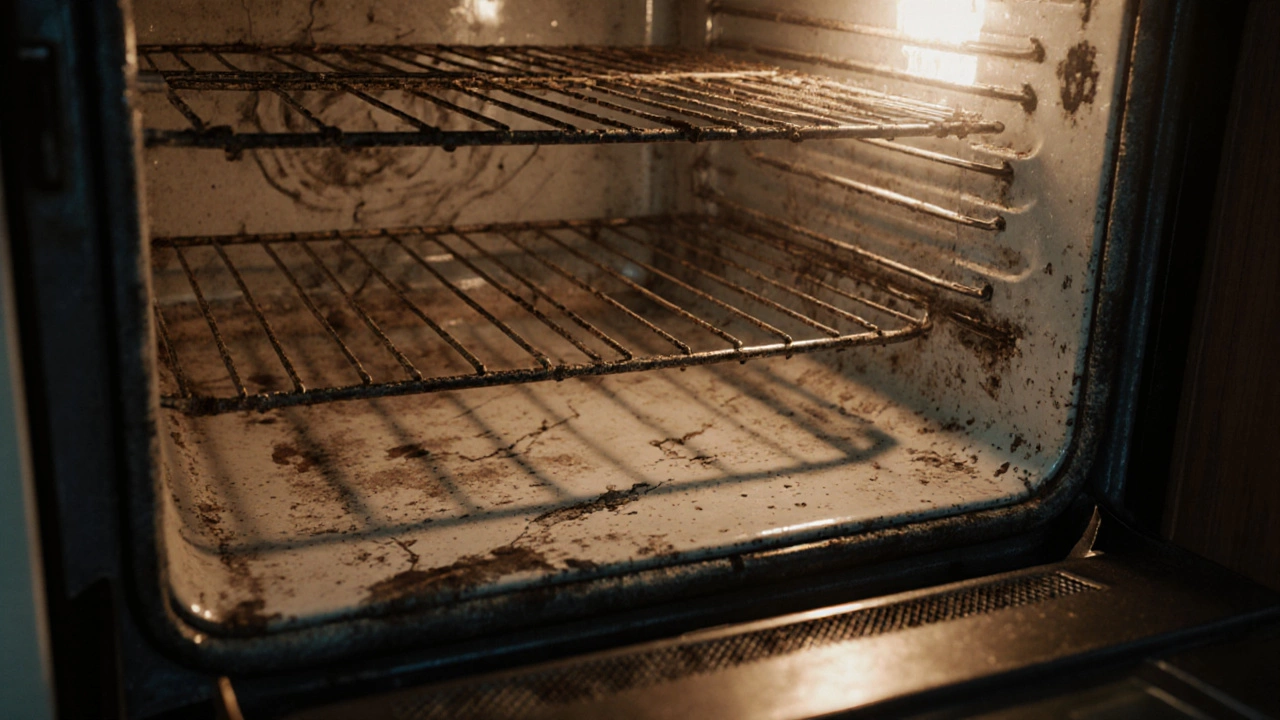
Most ovens last 13-15 years, but signs like uneven heating, slow preheating, or control panel failures mean it’s time to consider replacement. Learn when repair makes sense and what to look for in a new model.
If your oven stops heating, makes weird noises, or just won’t turn on, you’re probably annoyed and hungry. The good news is many problems are simple to diagnose and fix yourself. This guide walks you through the most common issues, easy DIY steps, and the signs that it’s time to ring a South Shields repair specialist.
First up, the oven not heating. Check the power supply – is the plug secure and is the breaker on? A tripped fuse is the easiest culprit. Next, look at the heating element. When you turn the oven on, you should see the element glow red. If it stays cool, the element may be burnt out and needs swapping. You can spot a break or dark spot with a flashlight.
Temperature variations are another frequent gripe. If food is consistently under‑cooked, the thermostat could be mis‑reading. A quick test: put an oven‑safe thermometer inside, set the oven to 180°C, and see what the thermometer shows after 15 minutes. If there’s a big gap, the thermostat or temperature sensor likely needs replacing.
Stuck or unresponsive controls often come from a faulty keypad or a loose wiring connection. Turn the oven off, let it cool, then remove the back panel (make sure it’s unplugged). Look for loose wires or burnt connectors. Tighten any loose screws and reseat the connectors – many times the oven works again.
Finally, a smelly or smoky oven usually means food residue or a grease build‑up on the element. Clean the interior with a mild detergent, wipe the element gently, and run a short “self‑clean” cycle if your model has one. Clear the vent and fan as well; blocked airflow can cause overheating.
DIY fixes are great, but some situations call for a qualified technician. Gas ovens that won’t ignite, signs of electrical arcing, or a broken door seal impacting heat loss are best left to pros. Trying to repair a gas valve yourself can be dangerous, and a licensed engineer has the tools to safely test gas pressure.
Also, if you’ve swapped an element or sensor and the oven still won’t work, the control board may be at fault. Those boards are expensive and need proper diagnosis to avoid unnecessary replacement. A South Shields repair service can test the board with specialized equipment and give you a clear cost estimate.
Time is another factor. If you need the oven fixed fast for a big family dinner or a catering job, a local company can often schedule a same‑day visit. They’ll bring common spare parts, so you don’t sit waiting for weeks.
Choosing the right service matters. Look for a company that offers a clear price list, guarantees work, and has good local reviews. South Shields Appliance Repair Services, for example, offers transparent rates, a same‑day response window, and technicians who know the most common oven models in the area.
In short, start with the basics – power, element, thermostat, and clean the interior. If those steps don’t bring your oven back to life, don’t gamble with gas or complex electronics. Call a trusted South Shields pro, get a quick diagnosis, and enjoy a fully functional oven again.

Most ovens last 13-15 years, but signs like uneven heating, slow preheating, or control panel failures mean it’s time to consider replacement. Learn when repair makes sense and what to look for in a new model.

Learn how to spot a burned‑out oven heating element, test it with a multimeter, replace it safely, and avoid common pitfalls.

When your oven won't heat up, it's a pain—especially when dinner plans depend on it. This article digs into the most common reasons ovens fail to heat and how to tackle each problem. From simple fixes like checking the power supply to more advanced issues with heating elements or thermostats, you'll find straightforward advice. I break down what you can DIY and when to call a pro. No jargon, just practical tips to get your oven back in action.

Not sure if you should fix your electric oven yourself or call a pro? This article breaks down what makes an oven repair simple or complicated, what you can tackle with basic tools, and what’s usually best left to a technician. You’ll get real tips and common pitfalls, plus some surprising facts about oven problems. By the end, you’ll know whether grabbing a screwdriver or the phone is the smarter move. Don’t get burned by a quick fix gone wrong.

Thinking about whether to repair your oven or buy a new one can be a tricky choice. This article breaks down the costs, potential savings, and factors to consider. Learn about repair estimates, when it makes sense to buy new, and how energy efficiency plays a role. Discover when it's smart to invest or when it might be time to go shopping. Find practical tips and real-world advice to guide your decision.

An oven not heating up properly is a common issue faced by many, and it can be tricky to pinpoint whether the element or the thermostat is the culprit. This article explains the differences between the two components, highlights signs that could indicate which part might be broken, and offers practical tips for troubleshooting and potentially fixing the problem. Understanding these parts' roles can save time and prevent unnecessary expenses.

Electric ovens are essential kitchen companions, but diagnosing problems when they act up can be tricky. This guide helps you pinpoint the root causes of common oven issues. Learn how to identify whether it's a heating element failure or a calibration error. Discover simple troubleshooting tips you can try before calling a professional. Master the art of diagnosing oven problems efficiently and safely.

Deciding whether to repair or replace a decade-old oven can be daunting. There are factors like repair costs, energy efficiency, and appliance lifespan to consider. This article will guide you through the key considerations and provide tips on when it's financially wise to fix an old oven versus investing in a new one. We'll also explore simple DIY fixes and when to call a professional.

Repairing an electric oven that won't heat can vary in cost, depending on the issue at hand. Understanding potential problems and their solutions can help in estimating expenses. Common issues include malfunctioning elements, faulty thermostats, or broken wiring. Identifying these problems might save you time and money in the long run. This article delves into cost considerations and troubleshooting tips.